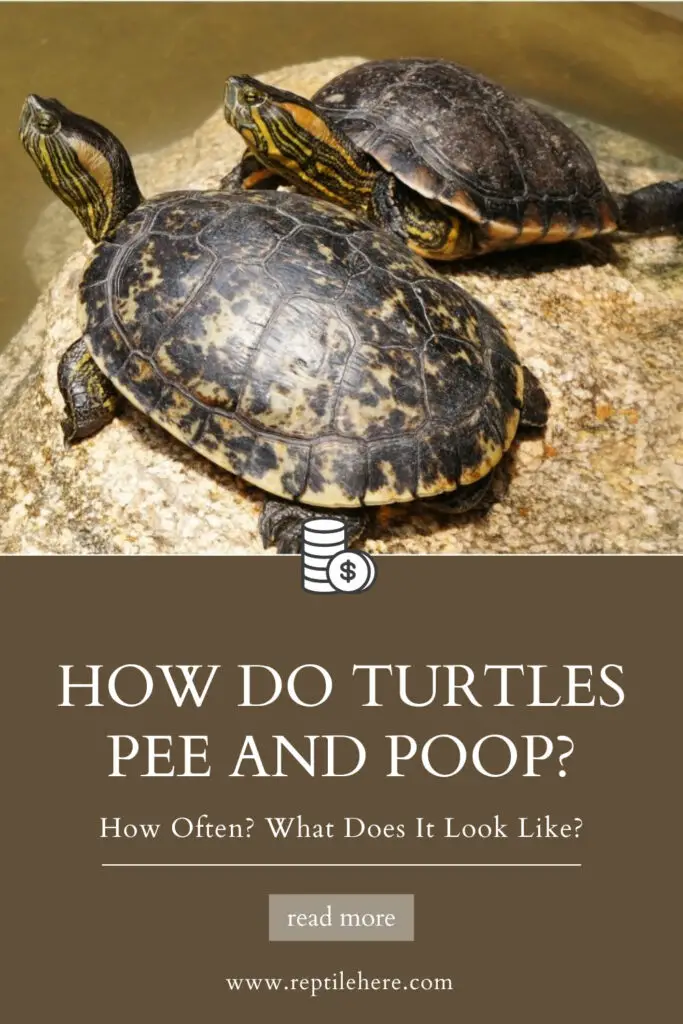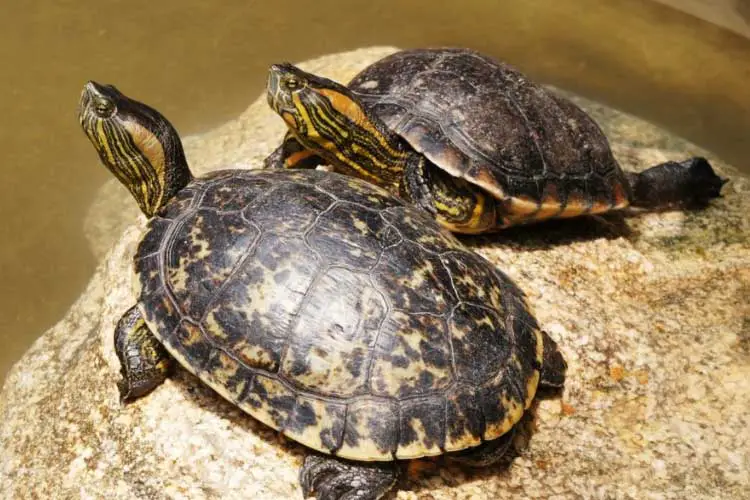How Do Turtles Pee And Poop? How Often? What Does It Look Like?
Excretion is good for the health and well-being of all animals and your pet turtle isn’t an exception. But have you ever got curious as to how your turtle pees and poops? Or what the poop looks like? If yes, we’ve prepared this guide for you.
So, how do turtles pee and poop? Turtles pee and poop through their cloaca. Urine in turtles is produced by kidneys and delivered through ureters to the cloaca. Turtle feces produced in the large intestine also enter the cloaca and mix with the urine, where they’re lumped together and passed out via the cloaca/vent as waste.
Read the guide below to discover more interesting details about how your turtle poops and pees, how often they do it, and what the poop looks like. We’ll also teach you how to check the poop to determine the health status of your pet turtle.
How do turtles poop and pee?
Contents
As we’ve already stated above, turtles poop and pee through the cloaca. Located towards the tip of the tail, the cloaca is an internal chamber in turtles that serve as the exit path for your pet’s digestive and urinary tracts.
Unlike most animals which feature separate openings for defecation and urination, birds, amphibians, reptiles (including turtles), and some mammals have only one opening—the cloaca—to serve all these purposes.
The excretion process begins with waste matter accumulating in your turtle’s large intestine where it is then pushed toward cloaca through a series of muscle contractions known as peristalsis.
Also, then urine is created in the turtle’s kidneys and then enters two small tubes known as ureters which deliver it all the way to the cloaca. It’s here that the two types of waste come together and mix, or get lumped together into a single waste product.
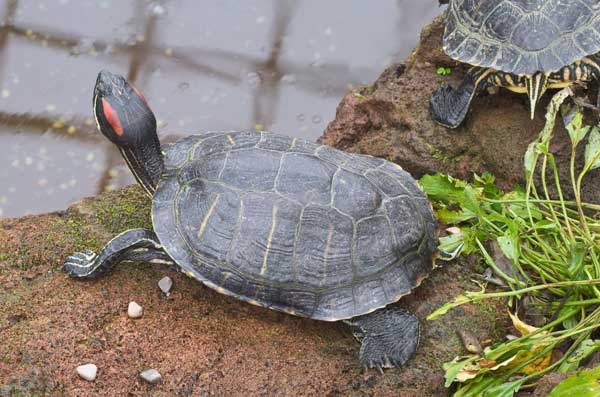
The cloaca muscles will then open and close to help release the urine and feces out of their body and into the outside environment, e.g. in the water for aquatic turtles. Don’t be surprised to find turtle poop in water.
Note that the pee and poop usually come out in solid form and their color tends to vary depending on the turtle’s diet. For instance, green sea turtles usually produce green poop due to their primary diet of marine plants.
However, keep in mind that this cloaca is a multipurpose body part that’s also used by your pet turtle for the reproduction process. It also plays a role in respiration, technically termed cloacal respiration, and butt-breathing in layman’s language.
In other words, males release their sperm through their cloaca and into the female cloaca where it gets to the oviducts to fertilize the eggs. In a gravid female turtle, the eggs get relurtle feceseased from the ovaries and in oviducts before they finally get released through the cloaca/vent.
Watch the rare video below of a sea turtle pooping
Do turtles poop out of their mouths?
Turtles don’t poop out of their mouths. The idea that turtles usually poop through their mouth has been ongoing around turtle forums and other turtle owners’ circles. But this claim is pure MYTH!
We’ve already seen above how turtles can eliminate feces and urine from their body through the cloaca, the vent towards the end of their tails.
Probably what may have given rise to the idea of a turtle popping out of its mouth is this discovery made by the National University of Singapore researchers. They found turtles to be urinating through their mouth.
Even then, it’s not about all turtles but the Chinese soft-shelled turtle that they were investigating.
The researchers found out that these turtles removed urea from their mouths and even contain a specific protein to help with the urea removal. Interestingly this protein wasn’t present in their kidneys but only in their mouths.
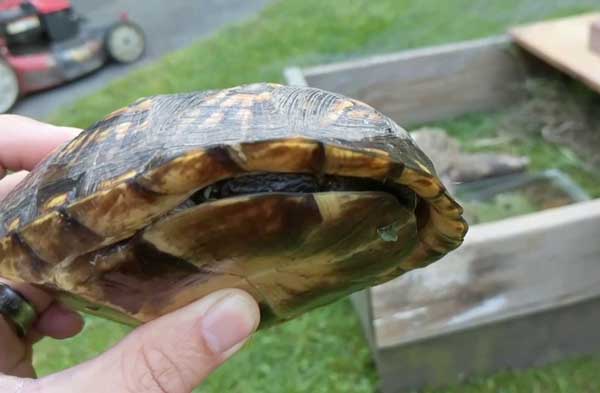
Typically, this isn’t urinating but simply getting rid of urea. And it’s a healthy process that enables these turtles to survive in the sea or brackish waters. Peeing simply requires taking in fresh water to wash out the urea.
But the saltwater is unsafe for drinking. The turtles just need to rinse their mouths using local water, preventing the health issues that may arise from drinking saltwater.
How often do turtles pee and poop?
The baby turtles will pee and poop more frequently, usually every day, than older turtles. If your hatchling goes for more than a day without peeing and pooping, then there could be an underlying problem with it.
However, turtles with over 4-inch shell length tend to poop and pee less frequently—usually every 3 to 4 days.
Thus, if your turtle poops every day or goes for up to a week without defecating, then something may be wrong with it.
Other than this normal pooping, your turtle may pee and poop whenever you handle it and it gets scared or stressed (more details about this topic coming up later).
Keep in mind that these are just general guidelines. The frequency of defecation may slightly vary, depending on when and what you feed your turtle as well as your turtle species.
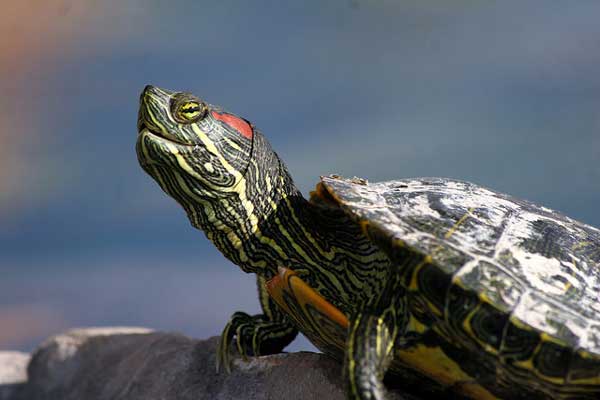
Be sure to observe your pet over a long period of time to master its bowel habits.
IMPORTANT: If you think that your turtle isn’t pooping as it should and you sense that it may have some problems, don’t hesitate to consult your vet since it could be constipating or suffering from other underlying issues.
How big is turtle poop?
There’s no standard size of turtle feces. Instead, the size of turtle poop is proportional to the size of the turtle—big turtles will release bigger poop and smaller ones will release smaller sizes of fecal matter.
And the amount of feces your pet turtle release will depend on a variety of factors including how much food it has eaten.
So, if you see one older box turtle poop or red ear slider turtle poop being bigger than that of another adult box or RES turtle, that’s perfectly normal and nothing to worry about.
And if your turtle poops many little pellets one day and then poops just a few larger pellets after a couple of days, it’s nothing to worry about.
What should aquatic turtle poop look like?
Healthy pet turtle poop usually comes out in a log shape or pellet form, just like healthy human excretion.
The poop usually comes in varying textures, from hard and dry to soft and mushy.
Also, the poop comes in a variety of colors, depending on what you feed your pet turtle. The most common colors for turtle feces include white, green, and brown.
If your turtle poop is green, it simply means you’ve been feeding it a diet mostly made of vegetables or plants.
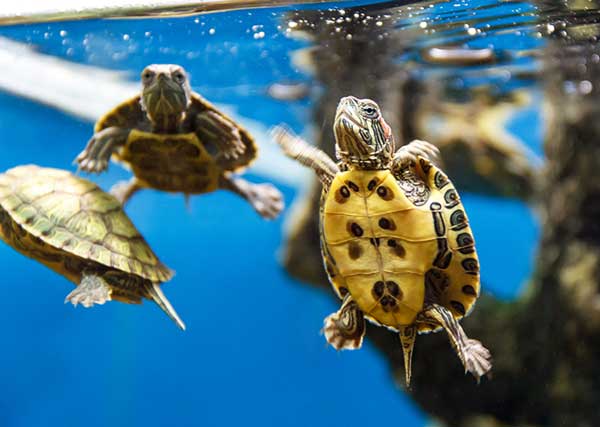
Brown turtle poop means your turtle has been mainly feeding on meat or insects.
And white poop indicates the presence of urates and uric acid, which is completely normal for reptiles. It may also signal that your turtle has been taking a calcium-rich diet, e.g. shells and bones.
Keep in mind that turtle poop may not be easy to see since these animals usually bury it in the dirt or sand.
What does baby & healthy turtle poop look like?
As we’ve said before, healthy turtle poop is excreted in solid form (log shape or pellet form) and it only comes out every 3-4 days for adult turtles or every day for baby turtles.
This means if you see your brown baby turtle poop every day or your adult turtle’s brown poop pellets every couple of days, you should rest assured that your pet turtle is happy and healthy!
However, you may want to keep a schedule of how your pet turtle species defecates to enable you to easily notice when there’s a significant change.
However, there are times when your pet may be releasing unhealthy turtle poop and you need to take action.
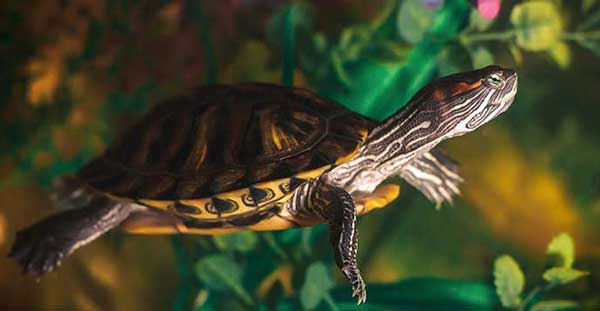
One instance of unhealthy tortoise poop/turtle poop is red or black. This usually indicates internal bleeding in your pet and you should take it to your vet immediately for diagnosis and treatment.
Also, if your notice your turtle removing runny and watery poop or feces with blood in it, then it’s a sign of diarrhea and you should take your pet to the vet.
If your turtle is constipated, it may also produce unhealthy poop which looks solid and dry. It may also be small in size. Constipation could be due to poor diet, dehydration, or underlying health problems.
A turtle with a gastrointestinal parasitic infection, whether it’s bacterial, viral, or parasitic worms, may also produce diarrhea or soft stool. It may also be bloody and mucous.
In some cases, the stool may contain string-like matter or some white object which might be the parasitic worm.
Another form of unhealthy turtle poop is when your turtle produces smelly stool that’s softer than usual. This is usually caused by an excess protein diet.
Impaction in turtles, a condition where the digestive system can’t properly process food, may also lead to unhealthy defecation habits in your turtle. Your turtle will likely stop eating and may even vomit. It’s also likely to produce poop that’s pale in color.
If you notice any of the above instances of unhealthy pooping in your turtle, we advise you to take it to your vet immediately. These could be signs of a health issue that could turn fatal if not treated on time.
Why do turtles pee when you pick them up?
Your turtle releases pee when you pick it up because it gets stressed, scared, frightened—name it!
Even worse, your turtle may urinate as well as defecate due to stress when you pick it up for a short period of time.
This is especially a common occurrence for turtles that aren’t used to handling.
However, turtles that are young or aren’t used to being handled by people will often release body fluids because they get scared.
Some turtles may also deliberately release pee/poop as a defensive mechanism when they feel that they may be in danger.
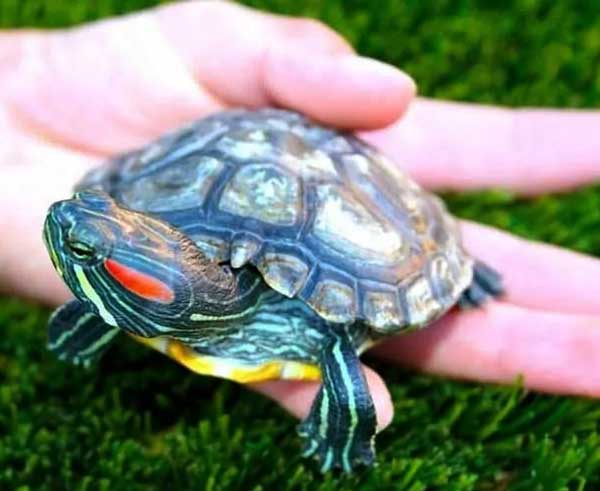
You can keep your turtle from peeing when you pick them up by getting them used to handling.
But do it gently and gradually. Start by handling them for just a few seconds for the first few times.
And after they get used to handling, avoid doing it for prolonged periods (turtles generally don’t like being handled!).
FAQs:
An adult pet turtle usually doesn’t defecate a lot and will only do so after a couple of days. Baby turtles are more likely to defecate every day, but not many times a day. If you think your turtle poops a lot, you may want to consult your vet. Also, you may want to check your pet turtle poop for any unhealthy turtle indicators and take the necessary action as soon as possible.
Turtle pee contains uric acid, a toxic substance that makes it harmful to humans. When this acid gets into contact with your skin, it may cause burns and even irritations. In some cases, it may even cause an infection. You should make sure you wash your hands immediately with soap and water if you come into contact with your pet turtle urine. If you’ve open wounds or cuts, it’s best to avoid contact with turtle urine.
Your turtle may eat its poop to get beneficial bacteria left over in the feces to aid in digestion. In some cases, they may also eat fish feces. Baby turtles usually eat feces from their older turtles to get the helpful bacteria.
Final Verdict
Just like any other animal, turtles pee and poop. They do so through the cloaca, an opening located towards the end of their tails which also acts as their reproductive and respiration part. Turtles generally defecate after a couple of days while their young ones tend to do it every day. Healthy turtle feces usually take the form of pellets or a log shape.
We have just discussed everything you need to know about turtles peeing and pooping in this guide. We hope that this guide has given you insights into your turtle pooping behavior. You can now tell how often your turtle poops, how big the poop is, and what different pop colors say about your turtle’s health.s
